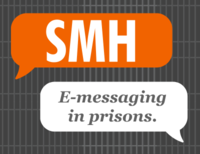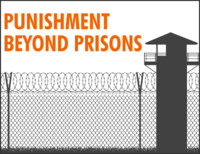Can you help us fight this industry and reunite families face to face?
Donate
Screening Out Family Time: The for-profit video visitation industry in prisons and jails
a Prison Policy Initiative report by Bernadette Rabuy and Peter Wagner
January 13, 2015
Executive Summary
Video technology like Skype or FaceTime can be a great way to stay together for people who are far apart. It is not the same as being there in person, but it is better than a phone call or sending a letter.
Given that there are 2.2 million people who are incarcerated, often many hundreds of miles from their homes, it should be no surprise that prison and jail video visitation is quietly sweeping the nation.
But video visitation is not like Skype or FaceTime. For one, these well-known technologies are a high-quality, free supplement to time spent together, in-person. The video visitation that is sweeping through U.S. jails is almost the exact opposite.
In order to stimulate demand for their low-quality product, jails and video visitation companies work together to shut down the traditional in-person visitation rooms and instead require families to pay up to $1.50 per minute for visits via computer screen.
In this report, we collect the contracts and the experiences of the facilities, the families, and the companies. We:
- Determine how this industry works, and explain the key differences between video visitation in jails (where it is most common and most commonly implemented in explicitly exploitative ways) and video visitation in prisons (where there is a proven need for the service and where prices are more reasonable yet the service is actually pretty rare).
- Hold the industry’s fantastic promises up against the hard evidence of experience, including the industry’s own commission reports.
- Give hard data showing just how unpopular this service is. We analyze the usage data, and then walk through exactly why families consider this unreliable and poorly designed technology a serious step backwards.
- Identify the patterns behind the worst practices in this industry, finding that the most harmful practices are concentrated in facilities that contract with particular companies.
- Analyze why the authors of correctional best practices have already condemned the industry’s preferred approach to video visitation.
- Review the unanimous opposition of major editorial boards to business models that try to profit off the backs of poor families, when we should be rewarding families for trying to stay together.
- Identify how video visitation could be implemented in a more family-friendly way and highlight two small companies who have taken some of these steps.
Finally, we make 23 recommendations for federal and state regulators, legislators, correctional facilities, and the video visitation companies on how they could ensure that video visitation brings families together and makes our communities stronger instead of weaker.



